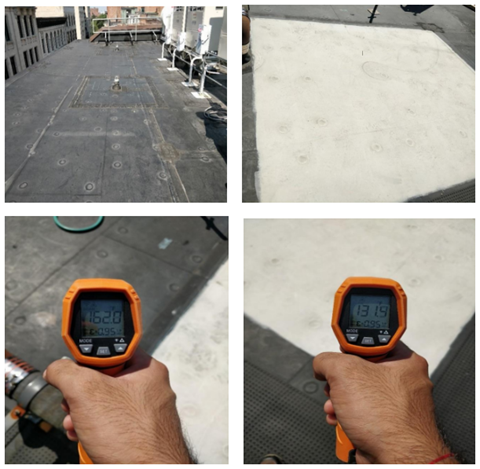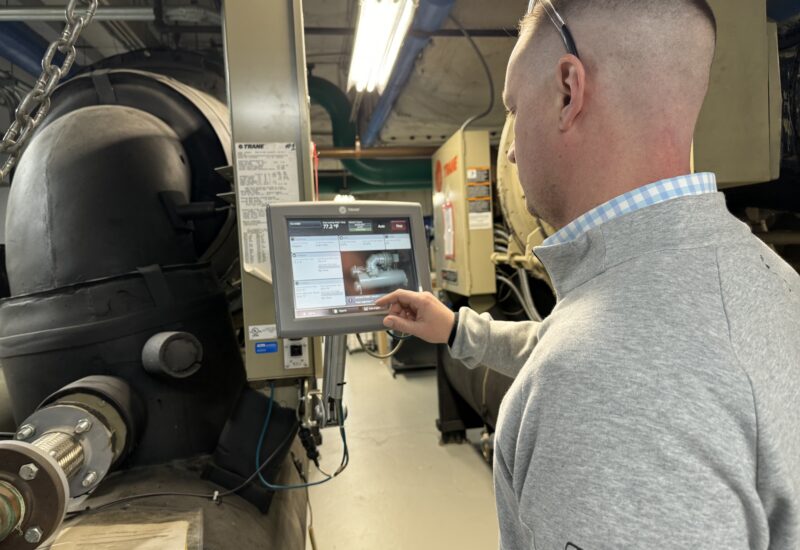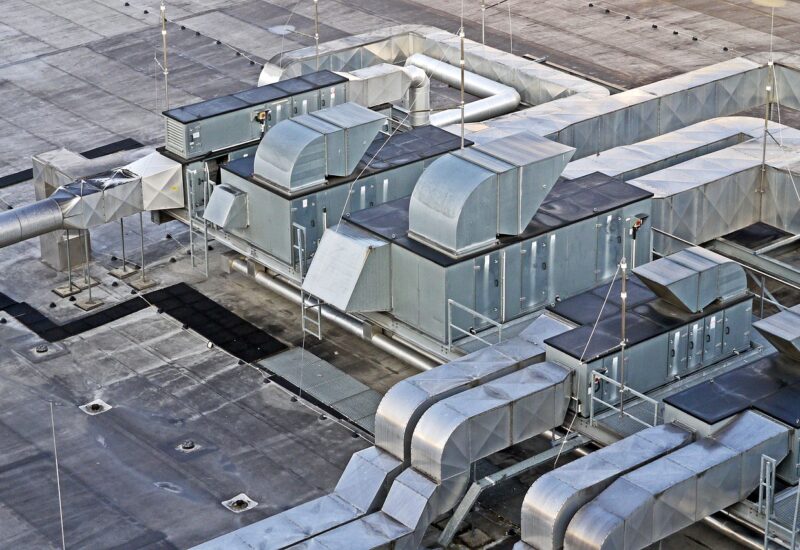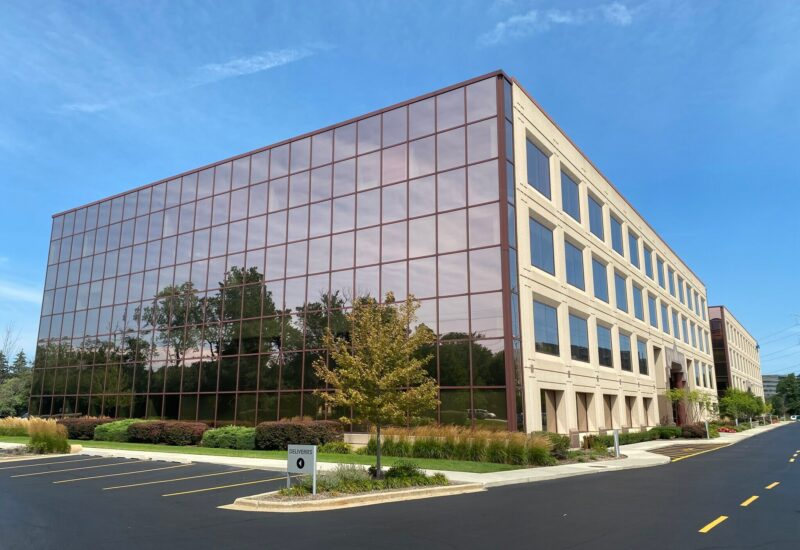Many of us grew up surrounded by family members who recommend not wearing dark-colored clothes outside in the sweltering sun. Instead, they advised us to wear light-colored clothes. Why? The answer was always that the darker the clothing, the greater the absorption of heat, making you feel hotter. While light-colored clothing reflects most of the visible wavelengths which, in turn, absorbs less heat and makes one feel comfortable. A similar principle applies to a building where the building represents a human body, and the building envelope represents its clothes. As per Lawrence Berkeley National Laboratory Report, for a building with a higher absorptive roof, the difference between the roof surface and ambient air temperature can be as high as 90°F as compared to 20°F for a roof with a highly reflective absorptive surface with similar insulative properties. [1]
The roof of a building in Boston, MA was recently inspected as part of an energy audit. The existing roof for the building consists of a black EPDM membrane on bonding adhesive over ½” protection board over tapered insulation. While the roof membranes were observed to be in good condition, the existing black roof, also known as “warm roofs,” deflects little sunlight. Due to this, the top floor of the building always stays warm due to the solar heat gain happening from the roof. During the hottest months of the year, this can increase the cooling load and energy consumption of the HVAC units.
Cool roofs are designed to reflect more sunlight than a conventional roof, and hence absorb less solar energy. This reduces the temperature on the top floor of the building and the cooling load for the air-conditioner. As an experiment, the building manager painted a small patch of the roof white color, also known as a “cool roof.” White roofing products, which have high solar reflectance, stay coolest in the sun, reflecting about 60-90% of the sunlight. [2] The temperature was measured for both scenarios and almost 30°F of temperature difference was measured between the two conditions on a bright sunny day. The cool roof can significantly help to reduce the cooling load in the building and thereby help towards the decarbonization goals for the building.
It is a myth that the cool roof must always be white. While many lighter products are available throughout the U.S., which have the designated EnergyStar label, there are homeowners in California who have access to darker asphalt shingles that meet various cool roof energy codes that are specific to the state. While the Solar Reflective Index (SRI) values for darker cool asphalt shingles are usually lower than the lighter tones, the darker cool shingle values were still high enough to meet most of the California energy code requirements.
Benefits of Cool Roofs:
- Reduced energy use: A cool roof will transfer less heat to the building, thereby reducing the cooling load and peak electricity demand for air-conditioning. The equipment can be downsized for the new equipment, saving money and potentially increasing cooling efficiency.
- Reduced air pollution and greenhouse gas (GHG) emissions: By lowering energy consumption, less electricity will need to be generated at the power plant and thereby reducing air pollution and (GHG) emissions. This in turn will help to improve the overall EnergyStar score for the property.
- Improved human health and comfort: A cool roof can help to reduce the amount of heat being transmitted through the roof, thereby improving the health and thermal comfort of the tenants on the top floor of the occupied space.
Interested in learning more about how much energy your building could save with the cool roof measure? Contact us!
References:
[1] Berdahl, P. and Bretz, S. 1997. “Preliminary Survey of the Solar Reflectance of Cool Roofing Materials.” Energy and Building 25:149-158. Lawrence Berkeley National Laboratory Report LBL-36020. Berkeley, CA
[2] U.S. Department of Energy – https://www.energy.gov/energysaver/cool-roofs







